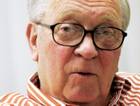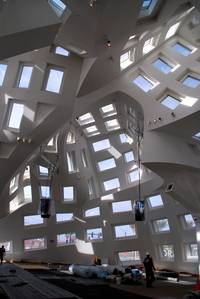
Jim Rogers
When it comes to medical tourism, Southern Nevada excels at the “tourism,” but is weak on the “medical” part.
That was the conclusion panelists and observers reached at the Southern Nevada Medical Industry Coalition’s inaugural medical tourism symposium Tuesday at Oscar’s at the Plaza Las Vegas.
Medical tourism, the blending of resources of top-notch medical facilities and clinics with the resort industry so that patients would travel for treatment and enjoy hotel and restaurant amenities, is a primary focus of the state’s revamped economic development plan.
Panelists concurred that Southern Nevada has the potential for exploiting medical tourism, but panelists and representatives of the city’s medical community attending the symposium pointed to some big roadblocks, many pointed out by panelist Jim Rogers, the former university system chancellor.
Rogers said the community faces an uphill battle in assembling the kind of medical care that would attract people from out of state or out of the country to visit for treatment.
“It has to be medical practice that drives this,” said Rogers. “I apologize for throwing a damper on this, but I haven’t seen much progress in 60 years.”
Rogers and some of the participants in the symposium offered reasons for the lack of progress:
• Medical organizations statewide have failed to communicate or collaborate with each other to establish a focused plan to grow Nevada’s health care presence.
• Turf wars and egos have prevented the state university system from developing a cohesive plan for the state’s medical school. Part of the problem is the state’s medical school is at the University of Nevada in Reno while most of the population, resources and tourism amenities are in Southern Nevada — and administrators from north and south don’t talk with each other, Rogers said.
• Collaborations with out-of-state medical schools, like the University of Pittsburgh, have failed because the school demands a facility and a budget no one can afford.
• While the Cleveland Clinic took a positive step in establishing itself at the Lou Ruvo Center for Brain Health in downtown Las Vegas, Rogers contends that it wasn’t a substantial move considering what’s needed.
• The local medical establishment is torn between developing what’s needed with local resources or recruiting other clinics to move and build here. Some say locals should build from within; others say resources should be used to convince established clinics of opportunities and growth potential here.
• States near Nevada — Arizona, Utah and New Mexico — have a head start. Medical schools in those states each graduate more than three times the number of doctors Nevada produces, and the University of Arizona’s medical school budget is larger than the budget of Nevada’s entire university system.
Without top-notch facilities in the state, medical leaders agreed that the most popular place to go for medical treatment would be the airport — to fly somewhere else for care. Rogers and panel moderator Richard Lee, in fact, gave examples of medical tourism by sharing their own experiences of traveling to out-of-state facilities for medical procedures.
Panelist Steve Hill, the state’s executive director of the Board of Economic Development, and Glenn Christenson, president of the Nevada Development Authority, admitted to feeling somewhat out of place encouraging medical tourism as one of the key components to economic diversification while the medical community discussed all the roadblocks to making it happen.
Hill said he was somewhat encouraged toward the end of the session when members of the coalition agreed to establish a task force to address some of the problems so that they could be brought to the state and to lawmakers to help solve.
State Sen. Valerie Wiener, another panelist, encouraged the medical community to bring matters to lawmakers immediately so they could observe problems and formulate ideas well ahead of the 2013 legislative session if action is needed to push medical tourism forward.
